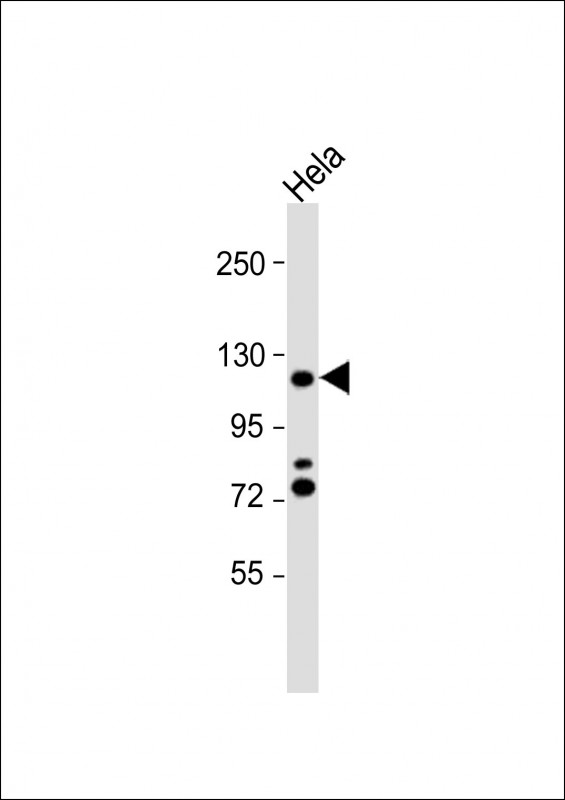

| WB | 1/1000 | Human,Mouse,Rat |
| IF | 咨询技术 | Human,Mouse,Rat |
| IHC | 咨询技术 | Human,Mouse,Rat |
| ICC | 技术咨询 | Human,Mouse,Rat |
| FCM | 咨询技术 | Human,Mouse,Rat |
| Elisa | 咨询技术 | Human,Mouse,Rat |
| Aliases | Protein HIRA, TUP1-like enhancer of split protein 1, HIRA, DGCR1, HIR, TUPLE1 |
| Entrez GeneID | 7290 |
| WB Predicted band size | 111.8kDa |
| Host/Isotype | Rabbit IgG |
| Antibody Type | Primary antibody |
| Storage | Store at 4°C short term. Aliquot and store at -20°C long term. Avoid freeze/thaw cycles. |
| Species Reactivity | Human |
| Immunogen | This HIRA antibody is generated from rabbits immunized with a KLH conjugated synthetic peptide between 32-61 amino acids from the N-terminal region of human HIRA. |
| Formulation | Purified antibody in PBS with 0.05% sodium azide. |
+ +
以下是关于HIRA (N-term)抗体的3篇参考文献及其摘要内容的简要概括:
---
1. **文献名称**:*The HIRA histone chaperone complex subunit UBN1 is required for chromatin incorporation of histone variant H3.3*
**作者**:Elsässer, S.J., et al.
**摘要**:本研究揭示了HIRA复合体亚基UBN1在介导组蛋白变体H3.3染色质沉积中的关键作用,通过HIRA (N-term)抗体进行免疫共沉淀实验,证实了HIRA复合体与H3.3的特异性结合及其在基因调控中的功能。
---
2. **文献名称**:*HIRA directs a conserved complex for deposition of H3.3 onto chromatin*
**作者**:Ray-Gallet, D., et al.
**摘要**:该研究利用HIRA (N-term)抗体通过免疫荧光和Western blot技术,证明HIRA蛋白通过其N端结构域招募伴侣蛋白复合体,调控H3.3在染色质上的靶向定位,尤其在基因启动子和增强子区域富集。
---
3. **文献名称**:*Histone H3.3 deposition by the HIRA complex mediates epigenetic memory in developing gene expression*
**作者**:Banaszynski, L.A., et al.
**摘要**:通过HIRA (N-term)抗体的ChIP-seq分析,研究发现HIRA复合体介导的H3.3沉积在胚胎干细胞分化过程中维持表观遗传记忆,其N端结构域对复合体的稳定性和功能至关重要。
---
以上文献均涉及HIRA蛋白的N端功能及其在表观遗传调控中的作用,相关抗体被用于验证蛋白互作、定位及功能研究。如需具体引用,建议核对原文细节。
×